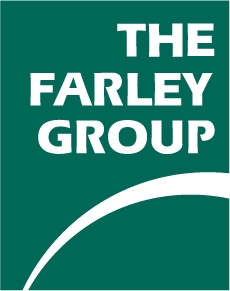
We collect basic website visitor information on this website and store it in cookies. We also utilize Google Analytics to track page view information to assist us in improving our website.
A traditional summer sport is becoming a big smash this winter.
Watch how The Farley Group is revolutionizing indoor tennis in Quebec, with our latest dome featured on Global News. Learn about the incredible impact of our inflatable tennis domes, and how our air supported structures are keeping the spirit of the game alive even in the chill of winter.
Former top ranked Canadian tennis player Francois Godbout discusses his contribution and enthusiasm for the game, embracing these innovative spaces sanctioned by Tennis Canada.
It's not just a game—it's our passion to provide cutting-edge facilities that bring communities together. Watch the video to see The Farley Group's commitment to sports and leisure in action.
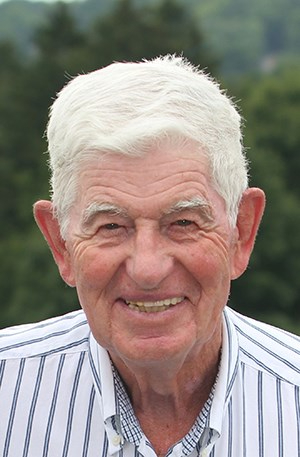
PUSLINCH, ONTARIO, CANADA, February 8, 2024 - It is with deep sadness that The Farley Group announces the passing of our founder, Ralph Farley, on December 16, 2023. He passed away peacefully at Hospice Wellington, just a month shy of his 93rd birthday.
Ralph Farley was regarded as a pioneer in the world of air-supported domes. He was credited as the first to introduce this technology to Canada, New Zealand, China, and Russia. He founded The Farley Group, which has since become a global leader in the industry. Under his guidance, The Farley Group had a hand in over 900 domes worldwide, primarily focused on North America, transforming the landscape of indoor sports and multi-sport facilities.
Ralph Farley's legacy reaches beyond his business achievements. He was known for his warm personality and cherished the friendships he developed throughout his career, many of which spanned decades. His passion and dedication were an inspiration to all who knew him.
The Farley Group extends our deepest sympathies to Ralph’s wife, Sheila, his family, and all who were touched by his remarkable life. As we mourn the loss of a great leader and friend, we also celebrate the enduring legacy he leaves behind.
Lauren Trevor, President and CEO of The Farley Group, remembers Ralph fondly, saying, “I will always remember Ralph’s warm smile in the office every morning when I first started with the company 6 years ago. Even at the age of 87, he would walk down the hall several times a week to my office, asking to borrow my paper shredder, insisting on doing it himself. His presence was a blessing to us all, especially at John’s Retirement/25th Anniversary gathering in August. He will be deeply missed.”
In lieu of flowers, Ralph Farley’s family asks that those who wish to commemorate him please make a donation to Hospice Wellington in his memory.
About The Farley Group
The Farley Group has a proud 50-year tradition in the manufacturing, installation, and servicing of sports domes throughout the world. Since its founder, Ralph Farley, brought the concept to North America from Sweden over 50 years ago, Ralph and his associates have been committed to quality and integrity in dome design and fabrication. Today, The Farley Group is made up of expert staff of sales consultants, designers, and highly skilled production and service professionals experienced in all facets of air structure technology. The Farley Group is committed to providing only the best products and ensuring their customer experience is the best in the industry.
Samantha Donaldson-Scharf
The Farley Group
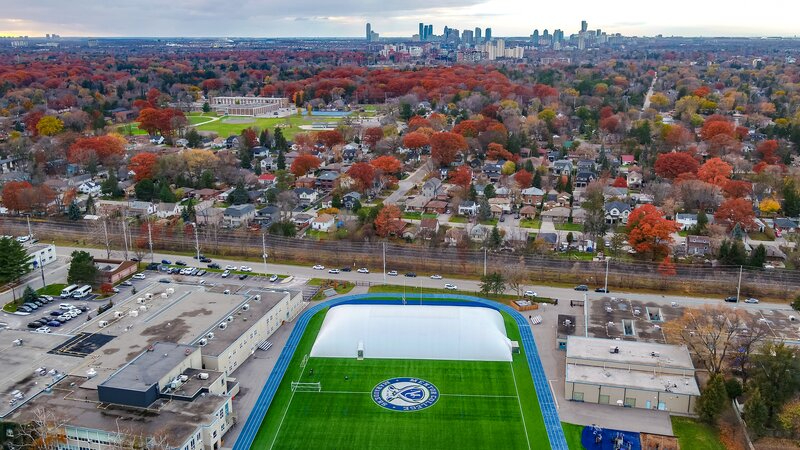
As the weather turns colder and the days shorter, sports lovers grapple with unpredictable weather conditions. The transition from fall to winter can be challenging, not just for athletes and coaches, but also for facility owners, as it impacts the continuity of all kinds of outdoor sports: soccer, tennis, golf, track and field, and other field sports.
However, there's a practical solution to this dilemma: air-supported domes. These domes are a game-changer for seasonal sports. They extend the momentum of summer activities into the fall and seamlessly carry it through the winter's chill.
Under a Farley Dome, athletes can train and compete in comfortable, consistent conditions, regardless of the weather outside. Essentially, domes bridge the gap between fall and winter sports, turning a once challenging period into a seamless, year-round sports experience.
In this blog post, we will talk about the many ways that air-supported domes not only benefit facility operators but also athletes and the broader sports community during the fall-to-winter transition.
The Farley Group has been manufacturing, installing, and servicing sports domes around the world for more than 50 years. Ever since our founder, Ralph Farley, introduced air-supported domes to North America, The Farley Group has led the industry with our commitment to quality and integrity. Our team consists of sales consultants, designers, and highly skilled production and service professionals skilled in all aspects of air structure technology. We’d love to talk to you about your dome project.
Call us or send us a message to get started now!
In Canada and the States, where the weather shifts from mild to harsh unpredictably, transitioning between seasons poses a significant challenge for sports continuity. Sports popular in the summer months often come to a halt in the winter, especially in communities lacking affordable indoor sports facilities.
Warm-weather sports like soccer, tennis, and golf really feel the impact when seasons change. Air-supported domes, however, make transitioning from fall to winter in these sports effortlessly smooth.
The excitement of a soccer game on a crisp fall day can quickly diminish with unpredictable weather. Rain, snow, and cold not only dampen spirits but also disrupt schedules, rendering fields unusable and hazardous. What were once lush, green fields become muddy or icy, increasing injury risks and diminishing the quality of play.
Plus, shorter days limit practice and game time, forcing players and coaches to squeeze in activities before nightfall.
Example: Afrim's Sports is the place to be when it comes to indoor soccer in the Albany, New York area! Located at the home of the Bethlehem Soccer Club, this Farley Dome covers nearly 44,000 square feet of indoor turf.
Tennis courts also suffer from seasonal changes. Damage from moisture, cold, and freeze-thaw cycles compromises playing surfaces, making them unsafe and hindering the play experience.
Cold temperatures also affect players and their equipment, with every drop in temperature impacting comfort and performance.
Without indoor alternatives, players lose valuable practice time essential for skill development and competitive edge.
Example: Barrie North Winter Tennis, a division of Tennis Clubs of Canada, is located in Midhurst, Ontario, and consists of 4 tennis courts under a heated, air-supported Farley dome complete with new LED lighting. The Farley Dome is erected in early October, and is taken down at the end of April each year.
Golfers face challenges as driving ranges become less inviting in colder, wetter conditions.
Practicing swings and techniques is harder, and golf gear, like balls, performs differently in the cold, affecting gameplay. This drop in comfort and accessibility leads to reduced player turnout.
Example: The Hastings Fieldhouse Farley Dome features a walking track, soccer field, golf driving range, as well as courts for basketball, ball hockey, and racquet sports. It truly is a multi-functional facility. It includes the capacity to accommodate many varied and unique training activities, as well as clinics and workshops.
Winter poses major challenges for track and field athletes. Outdoor tracks, essential for training, become unusable due to snow and ice. Each event, with its specific training requirements, is disrupted, affecting preparation and performance.
The cold weather also increases the risk of muscle strains and injuries, as proper warm-up becomes more difficult and slippery conditions pose additional hazards.
Example: The Farley Dome at University of Alberta's Foote Field is the largest, air-supported dome structure in all of Alberta, turning the seasonal field into a year-long training facility. It includes a multi-lane, 140 meter track with a jump pit available to the track and field community of Edmonton.
Each year, facility owners and operators face the challenging transition from fall to winter sports. This is where air-supported domes, particularly Farley Domes, come into play. Our domes are designed to help make manging sports facilities straightforward and efficient, regardless of the season.
One of the standout features of our domes is their rapid setup. They can be erected in just a day or two, minimizing downtime and keeping the sports schedule on track. This speed is a lifesaver for places that need to switch from open-air to indoor settings quickly when the weather changes.
Timing is everything here. Facility owners can time the dome set-up right at the end of the fall season. This means no awkward gaps — just smooth sailing from outdoor to indoor sports. It's this kind of scheduling smarts that helps get the most out of facilities all year round.
The ability to control the climate inside these domes is a significant advantage. Owners can dial in the perfect temperature, making it comfy for both players and fans. This matters a lot when you're moving from the mild fall to the chilly winter.
Stable conditions are key for sports where the weather really affects the game. Domes keep things consistent, offering the best setting for sports, come rain or shine.
Energy efficiency is another big plus. These domes use smart heating and cooling, keeping costs down, especially in the colder months when heating bills can go through the roof.
Domes are champs at handling sudden weather shifts. They can warm up or cool down in no time, crucial for dealing with those unpredictable fall and early winter days. This means the facility stays open and comfy, no matter what Mother Nature throws at it.
These domes also extend playtime. As days get shorter and colder, indoor domes offer a bright, warm spot for evening and night games.
And let's not forget how well they protect against the elements. Wind, rain, snow — domes keep them all out. This means less weather delays and more reliable schedules for teams and facility owners.
With their quick setup, climate control, and weather readiness, they're the perfect choice for facility owners wanting to keep the game going all year long. Choosing a dome isn't just prepping for winter; it's opting for non-stop sports, no matter the season.
For sports facility managers wrestling with tough decisions, choosing air-supported domes is a no-brainer. It's a move toward keeping the action going and growing. Think of it as an investment that pays off in more ways than one!
Why let the weather dictate another season? Now's the chance to turn your sports facility into a year-round hub of excitement.
As we gear up for winter here at The Farley Group, we're thrilled to share a feature from New York Tennis Magazine that showcases what we do best: helping keep tennis alive during the colder months!
Our CEO, Lauren Trevor, chatted with New York Tennis Magazine about our approach to designing, building, and helping maintain the world’s best tennis domes, including dozens in and around New York City. We're especially proud of our work in the Big Apple, where we've had the opportunity to tackle some really unique challenges—including building tennis domes on top of parking structures and beneath the Queensboro Bridge.
A big thanks to New York Tennis Magazine for the spotlight! To get the full story on our role in the tennis world, check out the full article here.
[Read Beyond the Baseline: Lauren Trevor, The Farley Group]
We've all been there — the nail-biting worry of whether an early frost or a sudden downpour will throw the day's schedule into chaos.
For outdoor sports clubs and businesses, the fall and winter seasons usually means cancelled events, disappointed customers, and yes, a dip in revenue that lasts well into spring.
But it doesn’t have to.
Stay with us as we explore the various ways that a dome helps you turn fall and winter from a stressful slump into one of the best seasons of the year.
Unlock the potential of your sports facility. Contact The Farley Group to understand the opportunities a dome offers.
When you think of indoor sports, you might imagine gymnasiums built from brick and mortar or steel and concrete. But in the world of sports facility solutions, there's something much more futuristic: the air-supported dome.
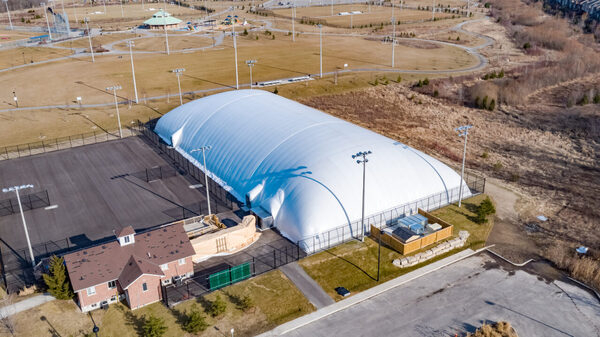
Domes are a marvel of modern engineering. Essentially, a dome is a large "bubble" made of durable, weather-resistant fabrics. This fabric is held up, not by beams or columns, but by a steady stream of air pressure. The result? A vast, open space free from annoying columns or beams, perfect for soccer, tennis, golf, and virtually any other sport you can imagine.
More importantly, air-supported domes are a fortress against bad weather. Whether it's rain, high winds or snow, sports that would normally have to be cancelled can continue smoothly under the protection of a dome.
Plus, their unique construction and flexibility makes domes an incredibly cost-efficient solution. Think of how much steel, brick, and concrete it takes to build an indoor soccer field or driving range — a dome offers the same benefits at a fraction of the cost.
Fall and winter, traditionally seen as downtime for outdoor sports facilities, can become your peak seasons with the right approach. An air-supported sports dome not only shields your space from the whims of weather but offers numerous avenues to scale up, diversify, and unlock untapped revenue streams.
Let's dive into the specifics.
We've all felt the sting of the off-season. Watching a perfectly good field or court sit underutilized, waiting for the next season to roll around… it feels like a missed opportunity.
With a dome, the action doesn't have to stop. Our sports domes feature state-of-the-art climate control to maintain a comfortable temperature and humidity inside even as mercury plummets. As far as snow and rain are concerned? They might as well not exist.
This means that the players, clubs, and sports organizations who book your facility in the warmer months can continue to practice and play into October, November, December...all the way around to next spring, when the dome’s ready to come down until next fall. No gaps.
Think about it – leagues can run longer, training sessions can be more frequent, and events don't have to be crammed into the summer months. To give just a few examples:
* Soccer Training Camps:
* Tennis Tournaments:
* Golf Driving Range:
All these result in higher player satisfaction, as they get more time to hone their skills and engage in the sports they love.
And for you? A significant uptick in revenue, even when the trees are shedding their leaves.
Don’t let the cold keep you down. Extend your sports season and revenue with The Farley Group’s domes.
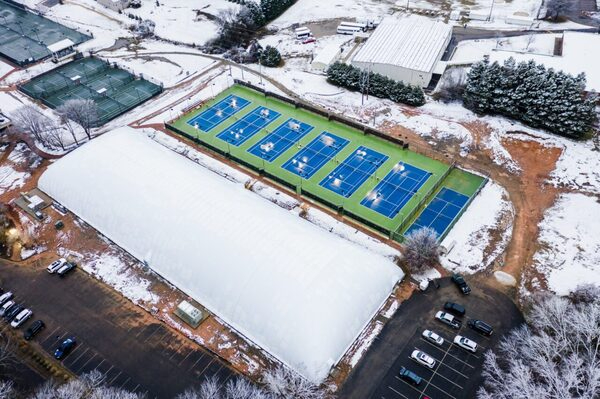
Have you ever found yourself looking at your facility and thinking, "I wish I could do more with this space"? With an air-supported dome, you can!
Every business owner knows the unease of relying solely on one kind of activity or event, especially when unforeseen circumstances can throw a wrench in the plans. The unpredictable nature of weather or seasons can easily affect bookings, causing revenue to fluctuate.
This is the beauty of a dome. Domes aren’t just for sports – they’re incredibly versatile spaces you can easily adapt to accommodate a wide array of activities and events.
Picture hosting fitness classes, from yoga to Zumba. Imagine setting up exhibitions, trade shows, or craft fairs. How about community events, workshops, or even theatrical performances? These are just a few ideas to tap into new customer segments and diversify your revenue.
And the beauty of it? No rain checks. With a dome, you're not just playing the game – you're changing it!
Think about the number of times you've had to cancel or reschedule games or events due to weather. The lost revenue, the disappointment of your clients…it’s beyond frustrating.
For many sports facility owners and managers, the looming threat of bad weather is a constant source of stress. It’s not just about the money, but about maintaining customer satisfaction.
And this isn’t just a fall and winter problem, either. Spring showers and summer storms are just as disruptive.
The great thing about domes is that they don’t have to go up each fall and come down each spring. Permanent domes that stay up year-round are a fantastic option for those who are looking to create true revenue stability.
In a world full of uncertainty (especially when it comes to weather), your dome brings a level of predictability and consistency that both you and your clients will love. Weatherproof your facility with The Farley Group. Learn more about our year-round dome solutions.
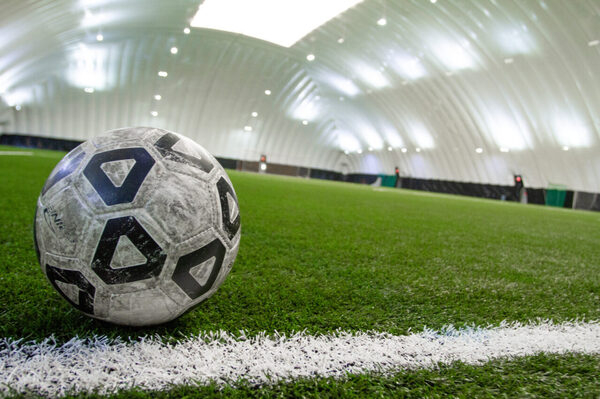
A Farley dome can be your secret weapon to unlock the full revenue potential of the fall and winter seasons. Domes provide a dependable, weather-proof, and customizable environment that transforms outdoor spaces into year-round venues.
Interested in taking the leap or just want more details? Reach out to The Farley Group for more information about our sports domes. Our team is eager to assist and guide you toward a future where your facility stands out, rain or shine!
